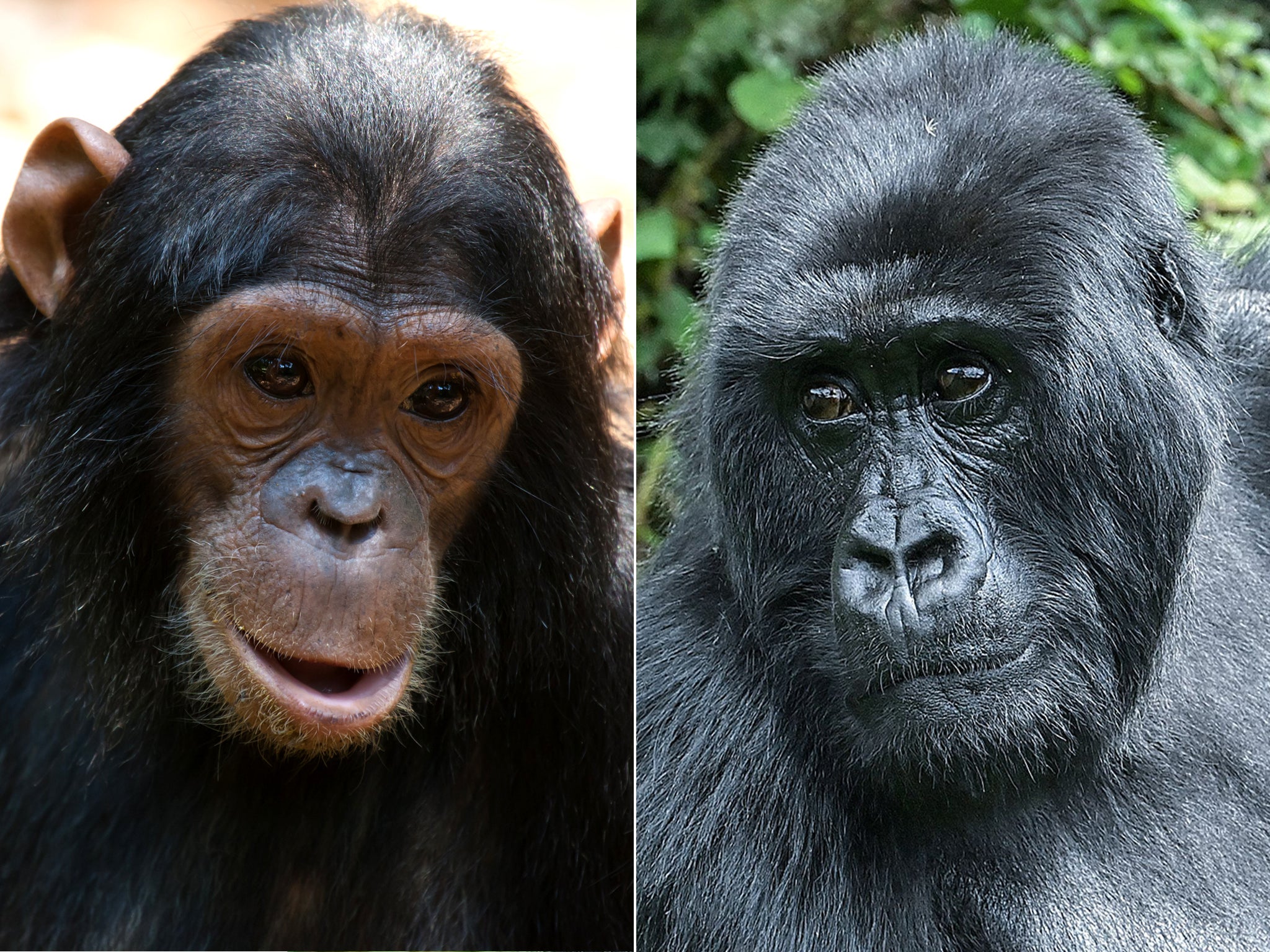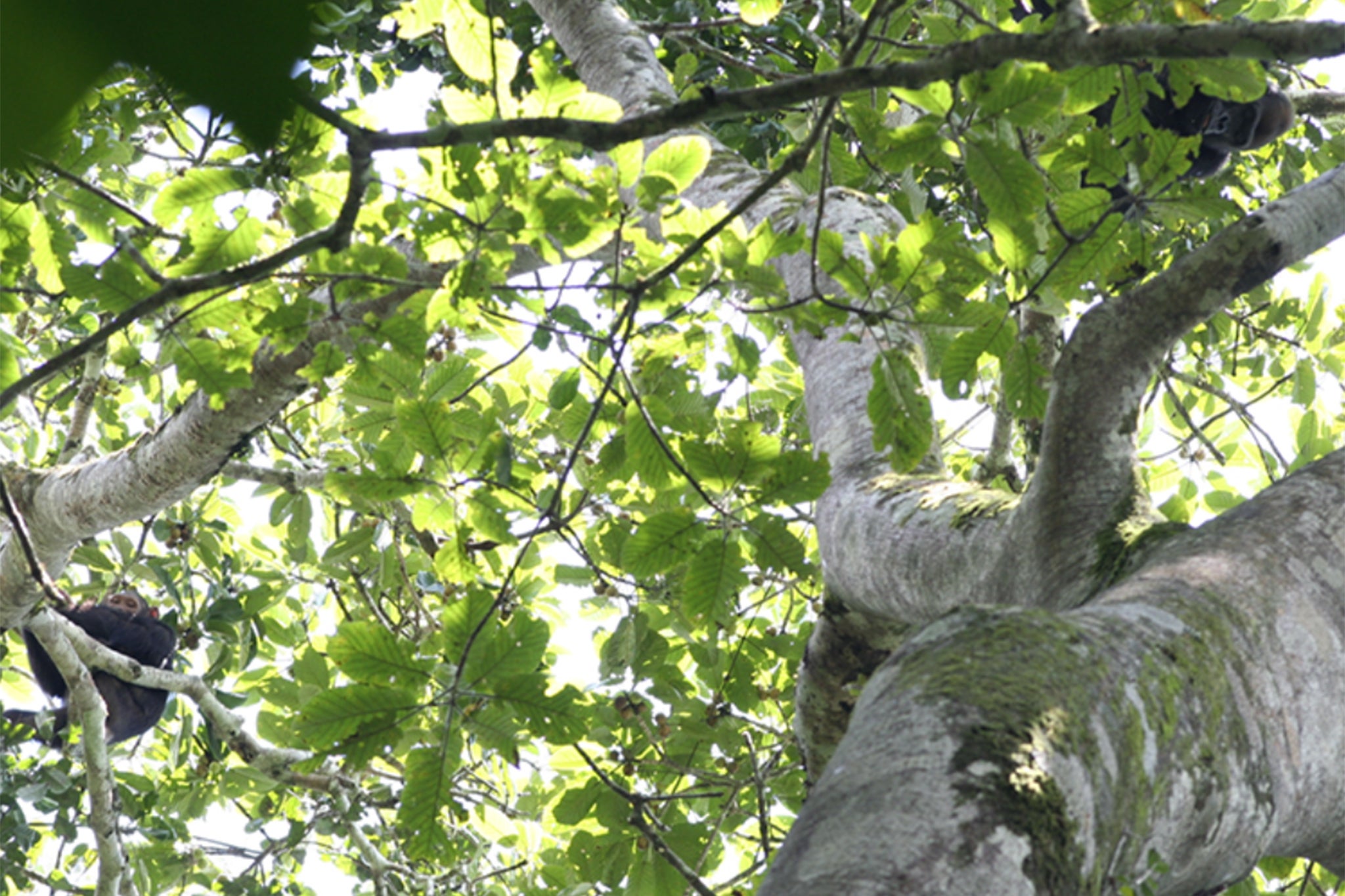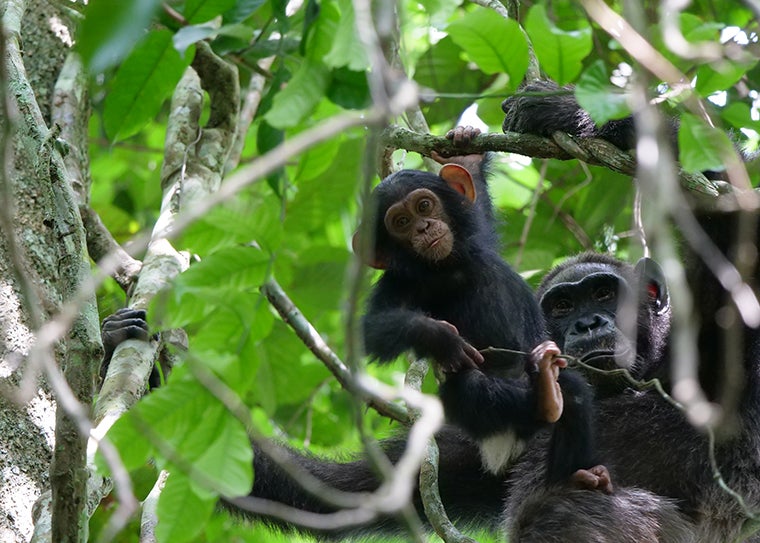Chimpanzees and gorillas are friends in the wild, scientists find
Relationships between the two great apes were often based on food

Scientists have documented the first evidence of lasting friendships between chimpanzees and gorillas in the wild.
Observations of two of humanity’s closest relatives taken in the Congo over 20 years found the apes could recognise and maintain social ties with members of the different species.
“There are few, if any, studies of interactions between primate species that have been able to take the identity of individuals into account,” said primatologist Crickette Sanz, of Washington University in St Louis.
“It has long been known that these apes can recognise individual members of their own species and form long-term relationships, but we had not known that this extended to other species.
“An example of what we found might be one individual travelling through a group of the other species to seek out another particular individual,” she said.

The bulk of the world’s remaining gorillas and chimpanzees live side by side in the vast forests of central Africa’s Congo Basin.
Researchers from Washington University, the Wildlife Conservation Society, the University of Johannesburg and Lincoln Park Zoo in Chicago followed the apes daily from 1999 to 2020 in a 100km section of the forests known as the Goualougo Triangle.
They watched interspecies interactions ranging from play to aggression and considered the potential benefits of these relations.
The scientists found little support for the idea that chimpanzees or gorillas were associating to avoid predators including leopards, snakes or birds of prey.
“Predation is certainly a threat in this region, as we have cases in which chimpanzees have been killed by leopards,” Ms Sanz said.
“However, the number of chimpanzees in daily subgroups remains relatively small, and gorillas within groups venture far from the silverback who is thought to be a protector from predation.”
Rather than saving each other from becoming food, it seemed the two species were helping each other find food: More than half of all observed interactions involved foraging.
One-third of the interactions recorded were instances of gorillas and chimpanzees feeding at the same tree, while 18 per cent involved the apes foraging for different foods nearby one another.

The study also found that chimpanzees and gorillas would have relationships with individuals of the other species lasting for years.
On several occasions at food sources, they observed young gorillas and chimpanzees seeking out particular partners to engage in bouts of play. Tolerant interactions were even observed between female chimpanzees with vulnerable offspring and gorillas.
“No longer can we assume that an individual ape’s social landscape is entirely occupied by members of their own species,” said co-author Jake Funkhouser, a doctoral candidate of biological anthropology at Washington University.
“The strength and persistence of social relationships that we observed between apes indicates a depth of social awareness and myriad social transmission pathways that had not previously been imagined.
“Such insights are critical given these interspecies social relationships have the potential to serve as transmission pathways for both beneficial socially learned cultural behaviours and harmful infectious disease.”
The relationships between these great apes could inform our understanding of interactions between different early hominins, the scientists said.
It has long been assumed that the humans of millions of years ago would compete for resources in the same areas.
But if the behaviour of modern apes can be considered indicative of the behaviour of early modern humans, then this study suggests these interactions would have most likely occurred in tolerant social contexts.
Join our commenting forum
Join thought-provoking conversations, follow other Independent readers and see their replies
Comments
Bookmark popover
Removed from bookmarks